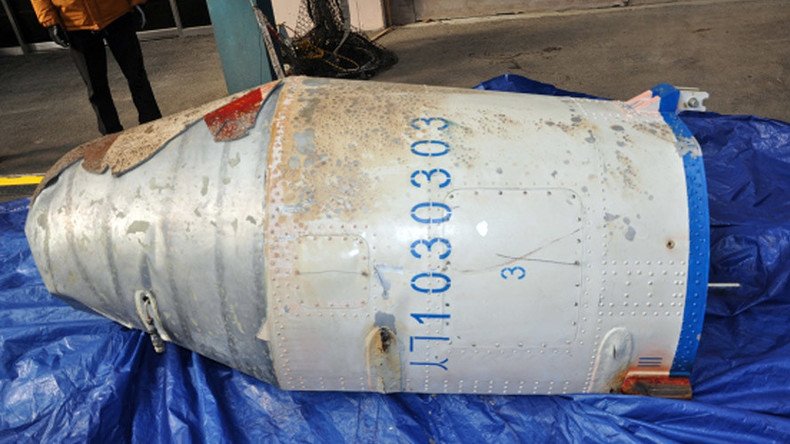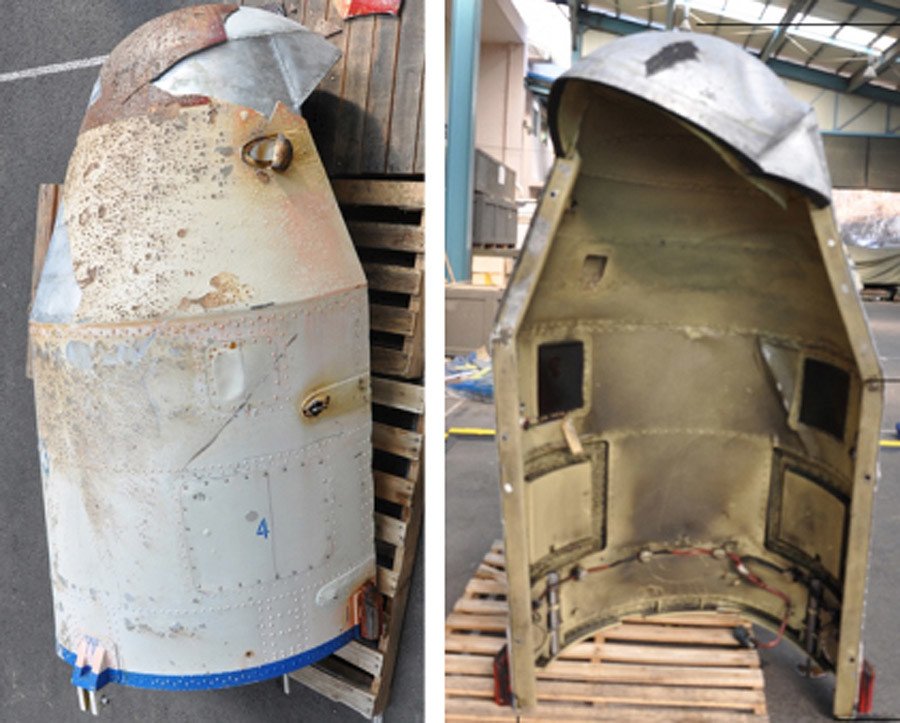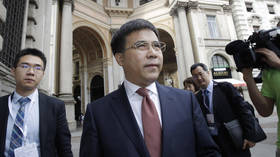Seoul fishes out ‘North Korean rocket debris’ after Pyongyang’s satellite launch (PHOTOS)

South Korea has released the first images of debris believed to be left over from a long-range rocket that North Korea launched into space on Sunday. According to Seoul, Pyongyang’s satellite has reached orbit and passes over South Korea four times a day.
“The proportion of the long-range missile’s diameter and length is 2.4 to 30, the same [as the previous rocket],” South Korea’s Defense Ministry said on Tuesday, referring to a Unha-3 rocket that the North previously launched in December of 2012. No debris was recovered from that liftoff.
Seoul is now analyzing the pieces, which it found soon after North Korea announced that it had succeeded in placing the “newly developed earth observation satellite Kwangmyongsong-4” into orbit. Reports suggest that the North Korean satellite is now passing over South Korea four times a day, though it is still unclear whether it is sending signals and functioning properly, according to Yonhap news agency.
“The locations where the first, second stages and the fairing landed are the same as those of Unha-3,” a Defense Ministry official was quoted by Yonhap as saying.

A South Korean Aegis destroyer spotted the rocket releasing its first stage into the Yellow Sea approximately two minutes after the alleged launch, and its fairing in waters southwest of Jeju Island – one of the region’s main tourist destinations – four minutes later.
The Joint Chiefs of Staff said on Sunday that the first stage had “separated from [the rocket’s] main body and exploded into about 270 pieces,” an indication that the rocket’s first-stage booster was fitted with a self-destruct device.
Based on the results of recent simulations, the South believes the second stage may have fallen into the Pacific Ocean somewhere east of the Philippine island of Luzon, the news agency reported.
North Korean satellite ‘tumbling in orbit’ – reports https://t.co/o0IWBSPpwhpic.twitter.com/9fFC9mMqq7
— RT (@RT_com) February 9, 2016
After studying the trajectory of the pieces, South Korean officials concluded that it was a long-range missile which had lifted off from North Korea’s northwest Dongchang-ri launch site on Sunday at 9:30 am local time (1 am GMT). It confirmed that the route matched that which the North had previously reported to the United Nations’ maritime and aviation agencies.
Seoul has been accusing Pyongyang of disguising a long-range missile test as a peaceful space mission, while Pyongyang claimed before their latest launch that the satellite would monitor the weather and map the location of natural resources and forests.
#UNSC to pass resolution on N. Korea over rocket launch within days https://t.co/4L7T50BbfGpic.twitter.com/s18DQlzNuJ
— RT (@RT_com) February 8, 2016
According to the South Korean Defense Ministry, Pyongyang is believed to possess a long-range missile with a maximum range of 12,000 kilometers and the capacity to carry a payload weighing about 250 kilograms.
The Ministry has also confirmed that the satellite and the third stage are rotating in their orbits. The latter should soon lose its orbit and burn up. The North still does not have so-called “re-entry technology,” which is necessary to bring a ballistic missile fired into space back into the atmosphere, Yonhap cited an unnamed official as saying.












